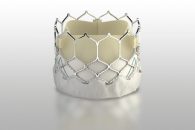Amyloidosis is a systemic disease that affects different organs and impairs their function. Recent studies with magnetic resonance imaging (MRI) have shown that between 13% and 16% of patients who undergo transcatheter aortic valve replacement (TAVR) have amyloidosis. A review of four studies showed that mortality at 20 months was twice as high when amyloidosis…
When Is It Best to Fracture a Bioprosthesis in TAVR?
At present, surgical aortic valve replacement (SAVR) uses bioprostheses. However, when these fail, we are presented with a great challenge, seeing as repeat SAVR involves a higher risk. In this context, valve-in-valve (V-in-V TAVR) has surged as a very attractive alternative. Bioprosthesis fracture (BPF) is a new interesting strategy that has shown lower gradient and…
TAVR: Vascular Access in Patients with Peripheral Artery Disease, 1-Year Outcomes
At present, the transfemoral access (TFA) is the preferred approach when it comes to transcatheter aortic valve replacement (TAVR). However, 5 to10% of PAD patients present tortuous iliac anatomy and calcification, aortic aneurysms or prior peripheral intervention, which makes it impossible. There are several alternatives to approach these patients: 1) TFA associated to peripheral PCI…
ACC 2023 | TAVR in Low Risk Patients: 3-Year Outcomes
At present, transcatheter aortic valve replacement (TAVR) has become the gold standard in the US, regardless surgical risk. The current ACC and AHA guidelines recommend that a Heart Team make the decision for 65 to 80-year-old patients with aortic stenosis. In low risk patients, fast recovery and short term benefits of TAVR should be weighed…
Coronary Physiology after Aortic Valve Intervention
Impact of Aortic Valve Intervention on Coronary Flow Reserve Myocardial flow might be compromised in patients with severe aortic stenosis, which might be driven by CAD and concomitant atherosclerosis or a compromised capillary bed. Capillary circulation might be compromised by increased left ventricular mass (LVM) which in turn might alter coronary flow reserve (CFR). Multiple…
TAVR and New Onset LBBB
The safety and efficacy of transcatheter aortic valve replacement (TAVR) is already established. However, it still poses a challenge for conduction disturbances, such as the need for pacemaker or new onset left bundle branch block (LBBB). The current rate for the latter ranges from approximately 11% to 19%. In most cases, 50% of LBBB reverses…
Is Rehospitalization a Relevant Factor after Aortic Valve Replacement?
Patients with severe symptomatic aortic stenosis treated with aortic valve replacement might still present cardiac failure, even after successful procedures. According to some reports, the incidence of cardiac failure after TAVR varies between 9% and 24%. The prognostic relevance of rehospitalization in these patients has not been studied yet; in fact, it remains unclear whether…
Real-World Results of Different Devices for TAVR
Transcatheter aortic valve replacement (TAVR) keeps growing in terms of the development of new devices, more extensive operator experience, and enhanced procedure planning. Nowadays, there are multiple device options, which depend on patient characteristics and operator experience. Two-arm studies compared these devices, analyzing the potential benefits of a certain valve over the others. This multicenter…
Clinical Implications of the Presence of HALT in TAVR Patients: 5-Year Follow-Up
The duration of percutaneous aortic valve implants can be increasingly observed over time, regardless of their corresponding surgical risk. In the follow-up of different registries, the presence of subclinical valvular thrombosis, evidenced in tomographic studies as an increase in valvular thickness with hypoattenuation (a term known as HALT), was observed from protocolized images. This subclinical…
We Should Treat Significant Stable CAD in Patients Undergoing TAVR
Aortic stenosis is associated to significant coronary artery disease (CAD) in nearly 50% of cases. When we decide to treat aortic disease using surgery, it has been established we should also treat heart disease. However, when using transcatheter aortic valve replacement (TAVR), this is still unclear, given that in many occasions we see stable lesions…









